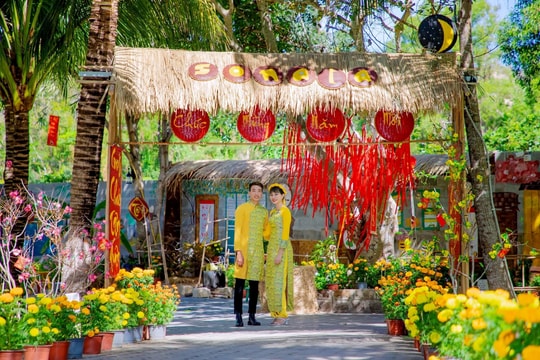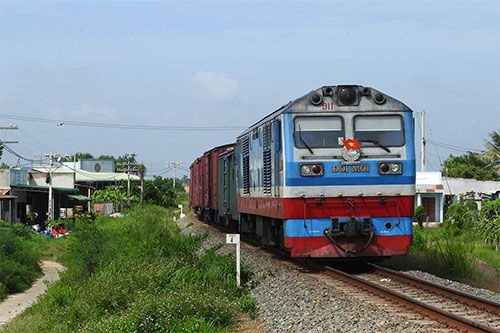Trang An landscape complex in northern Ninh Binh province has recently been recognised as a UNESCO World Heritage, while Thanh Hoa province is also planning to prepare for National Tourism Year 2015. For this reason, 2015 is expected to highlight the co-operation between Ninh Binh and Thanh Hoa provinces in exploiting tourism potential. The co-operation is a strategic plan towards sustainable tourism development in the provinces.
Both the provinces are lucky enough have been endowed with the world heritages, including Ho Dynasty Citadel in Vinh Loc district, Thanh Hoa province and the Trang An landscape complex in Ninh Binh province, which possess unique natural and historical values.
Ninh Binh is now home to a number of ancient places of worship, including the century-old Phat Diem stone cathedral and the newly constructed 700-hectare Bai Dinh pagoda – the largest Buddhist cultural and spiritual centre in Vietnam. The province currently has 242 temples, 380 shrines, 209 temples and 148 other places of worship within its borders. Constructed hundreds of years ago, a number of these sites have been recognised as special national historical sites, such as the temples commemorating King Dinh Tien Hoang and King Le Dai Hanh and the ancient Bai Dinh pagoda. In addition to religious sites, Ninh Binh also abounds with spectacular landscapes, such as the Van Long tourist site, the Trang An cave system, the Tam Coc – Bich Dong river cave and the Kenh Ga hot mineral spring. Therefore, visitors to Ninh Binh can engage in two types of tourism – spiritual tourism and sightseeing tours.
Meanwhile, Thanh Hoa is renowned for its Dong Son culture, with a series of archaeological relics and historical monuments such as Nui Do (Do Mountain), Cong Moong Cave, Ho Dynasty Citadel and Lam Kinh historical site. Another advantage of Thanh Hoa is a 100km coastal line with beautiful beaches, and some ecological tourism areas such as Ben En, Pu Hu, Pu Luong and Tam Quy national parks.
With these advantages, the co-operation between Ninh Binh and Thanh Hoa will help to promote the positives and develop tourism. However, the co-ordination requires strategic vision to ensure sustainability and efficiency in tourism development, with concrete activities such as building tourism products and tours linking heritage sites.
According to many tourism professionals at a recent seminar on tourism co-operation between Ninh Binh and Thanh Hoa, upgrading traffic systems is one of important factors in developing tourism links between two provinces in particular and with other provinces in general. Highway 45 connecting the Trang An Complex and Lam Kinh historical site, Ho Dynasty Citadel and Sam Son sea tourism area should be upgraded quickly to prepare for the 2015 National Tourism Year. Beside traffic issues, infrastructure and tourist areas should see investment to meet the increasing demand of visitors. In building tourism products, the professionals have encouraged two provinces to focus on spiritual tourism and ecological tourism.
Additionally, the tourism should be developed with environmental protection and the preservation of cultural and historical heritage. State management of tourism must also be strengthened, tourism marketing enhanced and hospitality sector professionalism increased.
Effective co-operation will create strong success in reaching the targets of Ninh Binh and Thanh Hoa provinces’ tourism sector in 2015.
Nhan dan Newspaper

















.jpg)





.jpeg)

.jpeg)


.jpeg)


